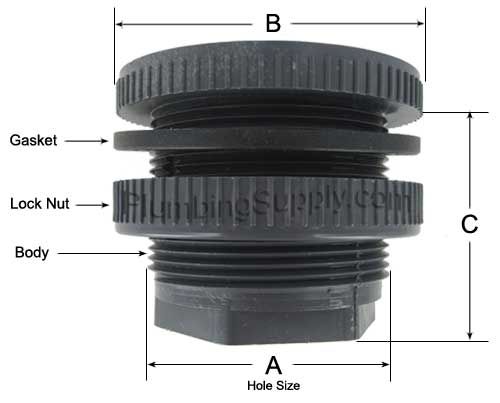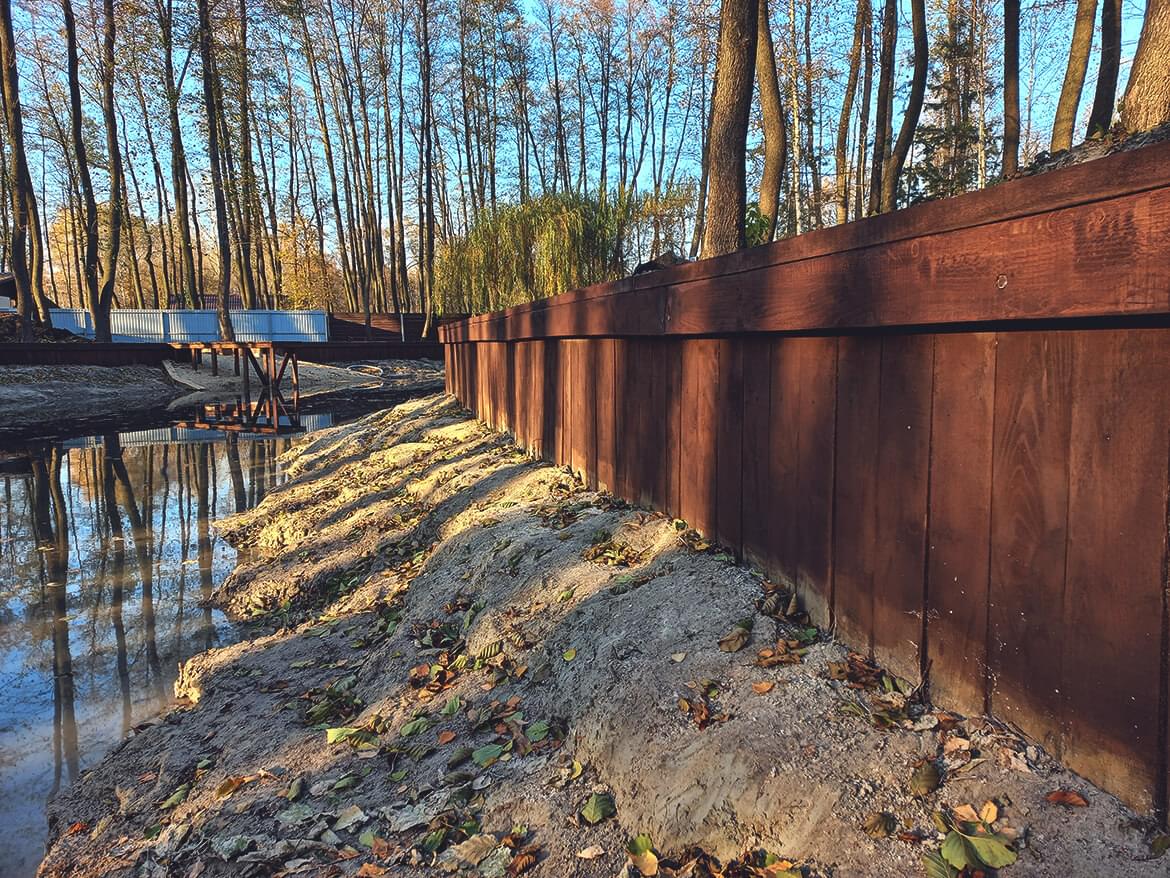Exploring the Numerous Uses Bulkhead Structures in Modern Architecture
Bulkhead frameworks play a significant function in modern-day style, serving both practical and visual purposes. They can define spaces, boost storage space options, and enhance lighting. In industrial setups, they act as focal factors that reflect brand name identity - Bulkhead on Lake Livingston. In addition, their assimilation typically supports sound administration and sustainable practices. Recognizing the complete extent of their applications reveals much about modern style fads and customer experience. What cutting-edge uses bulkheads might arise in the future?
Defining Bulkhead Structures
Bulkhead structures play an essential duty in contemporary design, working as important components in different building styles. These structures are usually defined as elevated platforms or ceilings, frequently utilized to conceal mechanical systems, wiring, or plumbing. Bulkheads can be located in both residential and industrial setups, where they supply a smooth blend of performance and appearances. Their layout can incorporate lights fixtures and various other ornamental elements, boosting the general visual appeal of a room.
Typically created from products such as wood, drywall, or steel, bulkheads can be customized to fit the architectural design and demands of the building (Bulkhead on Lake Livingston). They serve not just to hide unpleasant infrastructure yet likewise to create specified zones within open spaces. By taking care of the flow of an area, bulkheads contribute to the spatial organization, making them a considerable aspect of modern architectural technique. Subsequently, their definition encapsulates both visual and sensible dimensions
Useful Applications in Residential Design
Bulkhead frameworks play an essential function in household design by helping with space optimization methods that make the most of useful areas. In addition, they add visual layout elements that boost the visual appeal of living areas. On top of that, these frameworks offer vital architectural assistance solutions, making certain the stability and security of the home.
Room Optimization Techniques
As modern household styles progressively focus on reliable usage of room, ingenious strategies arise to make the most of performance without compromising appearances. One noticeable approach involves the integration of bulkhead structures, which can delineate locations while supplying essential storage space services. These frameworks can be utilized to develop upright storage space devices that enhance both organization and availability. In addition, multi-functional furniture, such as foldable tables and exchangeable sofas, complements bulkhead layouts, permitting areas to adjust to varying demands. Open up flooring strategies further enhance spatial circulation, motivating versatility in operation. Integrating integrated shelving and recessed lighting within bulkheads also adds to a streamlined setting, making sure that every inch of area is made use of efficiently and sympathetically within the overall layout.
Visual Design Aspects

Architectural Support Solutions
In modern domestic layout, an efficient architectural assistance service is necessary for maintaining the honesty of areas while maximizing design and performance. Bulkhead structures play a considerable role in this circumstance, offering as both support and partitioning elements. They can conceal mechanical systems, such as plumbing and electrical wiring, while offering reinforcement to the ceiling and floor systems. By purposefully placing bulkheads, designers can produce defined areas within open floor plans, boosting functionality without jeopardizing structural stability. Furthermore, these frameworks can accommodate illumination fixtures, adding to both aesthetics and usefulness. To sum up, bulkhead structures are important in residential style, providing versatile support options that improve both the capability and aesthetic appeal of living rooms.
Enhancing Looks in Commercial Spaces
When industrial spaces accept innovative bulkhead frameworks, they not only specify physical borders however likewise substantially enhance the general visual appeals of the environment. These architectural components function as aesthetic centerpieces, drawing attention and producing a sense of intrigue. By including diverse products such as metal, glass, or wood, bulkheads can show a brand name's identity and objective, adding to a cohesive design.
The strategic placement of bulkheads can adjust light and darkness, including deepness and dimension to otherwise level spaces. This interplay can change an industrial area right into a welcoming environment, urging consumer interaction. In addition, the use of color and texture in bulkhead layout can stimulate details emotions, boosting the general client experience. Eventually, the thoughtful integration of bulkhead structures raises the aesthetic charm of industrial areas, making them not only useful yet additionally visually charming, thereby promoting a long lasting impact on visitors.
Acoustic Performance and Noise Administration
Efficient acoustic performance plays an important role in contemporary style, particularly within industrial areas where audio monitoring is vital. Bulkhead frameworks can considerably boost acoustic high qualities by absorbing sound, minimizing reverberation, and mitigating sound transfer between areas. These functions are specifically beneficial in environments such as workplaces, theaters, and restaurants, where clear interaction and a pleasant acoustic experience are critical.
The calculated placement and layout of bulkheads can assist produce sound-buffer zones, efficiently isolating loud locations from quieter ones. Materials made use of in bulkhead building, such as soft finishes and acoustic panels, contribute to their sound-dampening capabilities. Additionally, the incorporation of bulkheads enables the assimilation of sound-absorbing aspects without compromising aesthetic appeal. By addressing acoustic efficiency, architects can produce harmonious environments that enhance convenience, boost user experience, and promote efficiency, making bulkheads a crucial part in the design of contemporary business spaces.
Integrating Bulkheads for Effective Space Utilization
Often forgotten, the integration of bulkheads in building layout can significantly enhance room use in modern buildings. These architectural components serve multiple useful objectives, providing a method to hide mechanical systems, electrical circuitry, and plumbing without jeopardizing aesthetics. By tactically placing bulkheads, architects can produce defined areas within open layout, thereby helping with much better company and flow.
Moreover, bulkheads can integrate storage space options and lighting functions, optimizing the functionality of otherwise wasted vertical area. In domestic settings, they may define zones such as cooking areas or living locations, while in industrial areas, they can boost the performance of layouts by plainly noting paths and workspace.
Inevitably, the thoughtful integration of bulkheads contributes to an extra organized and aesthetically enticing setting, enabling for versatile spaces next page that can evolve with the requirements of their residents. This approach not just maximizes space but also cultivates a much more harmonious interaction in between type and function.
Bulkheads in Public Architecture

Architectural Visual Enhancements
While many architectural components go for functionality, bulkheads in public architecture serve a twin function by boosting visual charm. These frameworks frequently develop visual interest via their design, incorporating seamlessly with surrounding aspects. By employing different materials, structures, and colors, bulkheads can add to a distinct identification for public spaces, such as airport terminals, galleries, and collections. Their tactical placement helps to mark locations, assisting visitors while including deepness to the total style. Furthermore, bulkheads can emphasize illumination, creating dynamic atmospheres that change throughout the day. This aesthetic enhancement not only raises the site visitor experience however also cultivates a local color, making bulkheads a necessary consideration in contemporary public style. Overall, bulkheads personify the fusion of form and function.

Architectural Support Solutions
As architects look for cutting-edge means to boost the architectural integrity of public areas, bulkheads become important elements in the style and construction procedure. These frameworks provide vital support, particularly in locations based on hefty foot traffic or vibrant tons. By dispersing weight equally, bulkheads help stop architectural failing while permitting for flexible style alternatives. In big places, such as arenas and convention facilities, bulkheads are frequently integrated into the total building framework, making sure stability and safety. Additionally, they can help with the incorporation of energies and mechanical systems, adding to the efficiency of space use. Eventually, bulkheads represent an essential service in modern-day public design, strengthening both capability and protection in community-focused settings.
Environmental Defense Actions
Including ecological protection procedures right into public architecture has come to be increasingly crucial as city designers focus on sustainability together with structural assistance. Bulkhead structures offer a twin objective in this respect, acting as barriers against disintegration and flooding while the original source at the same time boosting the aesthetic charm of urban landscapes. Their style usually includes natural environments such as vegetation, which can boost air top quality and give environments for wildlife. Furthermore, bulkheads can be crafted with permeable materials that permit for water absorption, lowering overflow and advertising groundwater recharge. This integration of ecological factors to consider not just protects the environment yet additionally promotes neighborhood resilience against environment adjustment. By utilizing bulkheads efficiently, architects add to sustainable metropolitan advancement that aligns with modern ecological objectives.
Future Trends in Bulkhead Layout
Arising trends in bulkhead layout mirror an expanding emphasis on sustainability, advancement, and performance in modern-day architecture. Designers are increasingly incorporating environment-friendly products, such as recycled compounds and bioplastics, to lower environmental influence. In addition, the combination of wise technology is ending up being prevalent, enabling bulkheads to offer multi-functional purposes, consisting of power storage space and environment control.
In city settings, modular bulkhead systems are getting traction, using flexibility in design and ease of installation. These systems can be adapted to different landscapes, permitting efficient room application. Additionally, aesthetic factors to consider are advancing; bulkheads are currently being created to over here improve aesthetic charm, usually including imaginative elements that resonate with regional society.
As climate resilience ends up being a concern, future bulkhead styles will likely prioritize flood defense and stormwater management, making certain architectural integrity while resolving environmental difficulties. This shift symbolizes an all natural method to style that fulfills both human requirements and environmental obligations.
Frequently Asked Inquiries
What Products Are Commonly Made Use Of for Bulkhead Building And Construction?
Common products for bulkhead building include concrete, steel, timber, and composite materials. These options supply durability, structural integrity, and resistance to ecological factors, making them appropriate for different applications in building and construction and design jobs.
How Do Bulkheads Impact Building Power Efficiency?
Bulkheads improve constructing power effectiveness by giving thermal insulation and decreasing air leak (Bulkhead on Lake Livingston). They help maintain interior temperature levels, consequently decreasing home heating and cooling down demands, ultimately resulting in lower power prices and improved ecological sustainability
Exist Any Kind Of Building Ordinance Particular to Bulkhead Structures?
Yes, constructing codes particular to bulkhead structures exist, varying by location. These guidelines typically resolve safety, architectural honesty, and ease of access, ensuring that bulkheads fulfill required criteria for construction and design within a provided jurisdiction.
Can Bulkheads Be Conveniently Changed or Eliminated Later On?
Bulkheads can usually be changed or gotten rid of, relying on their layout and building. Nonetheless, such changes might call for mindful planning and adherence to building ordinance to ensure architectural stability and safety and security are kept throughout the procedure.
What Are the Expenses Related To Installing Bulkhead Structures?
The prices related to installing bulkhead structures can differ significantly, generally influenced by products, layout complexity, and labor. Usually, expenses range from moderate to high, depending upon the project's certain demands and area.
Bulkhead structures play a crucial role in modern-day architecture, offering as crucial elements in different building styles. Bulkhead frameworks play a vital duty in household design by helping with room optimization techniques that take full advantage of useful areas. Typically forgotten, the combination of bulkheads in architectural design can considerably enhance space use in modern buildings. As architects look for innovative means to enhance the structural stability of public areas, bulkheads emerge as necessary parts in the layout and building and construction procedure. The expenses linked with installing bulkhead structures can vary considerably, normally influenced by products, style complexity, and labor.